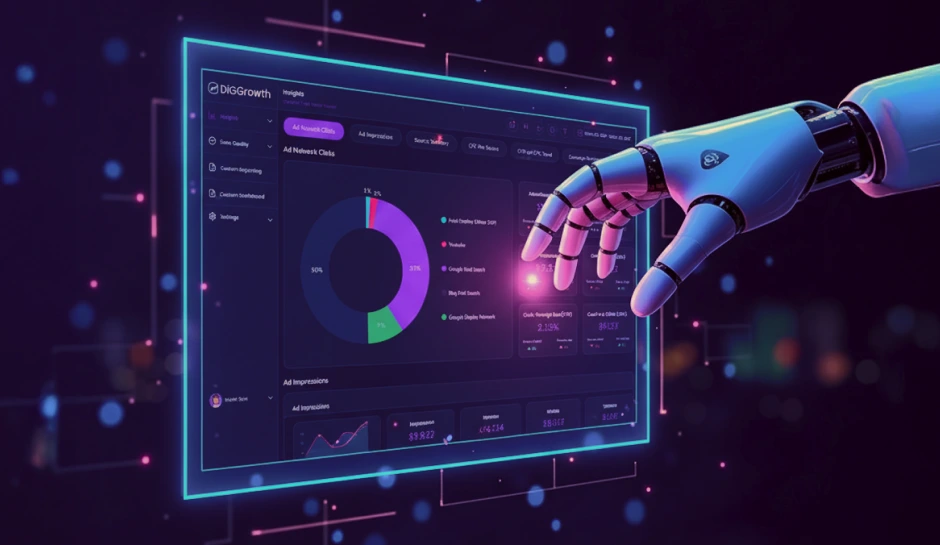
Data Governance Tools: Key Solutions for Managing Enterprise Data
Effective data governance requires the right tools to maintain data quality, security, and compliance. From Master Data Management (MDM) to metadata management and data lineage tracking, these solutions streamline workflows, ensure regulatory adherence, and improve decision-making. Learn how to choose the best data governance tools for your organization.
Data governance defines the policies, roles, standards, and procedures that ensure data integrity, security, and compliance within an organization. By setting clear rules for access, usage, and quality, governance frameworks address challenges like inconsistent data, security risks, and regulatory non-compliance.
Regulated industries, such as finance and healthcare, rely on strict data governance to meet legal requirements. Financial institutions must comply with Basel III and GDPR, while healthcare providers adhere to HIPAA. Non-compliance in these sectors leads to heavy fines, operational disruptions, and legal consequences.
The Role of Data Governance Tools
Data governance tools provide the infrastructure necessary to manage an organization’s data assets. These tools enforce policies, ensure data quality, and maintain compliance with regulatory requirements. By automating governance processes, they reduce redundancy and enhance transparency across data ecosystems.
Key Functionalities of Data Governance Tools
- Policy Enforcement: Establishes and applies governance rules across data environments.
- Data Quality Monitoring: Identifies anomalies, inconsistencies, and inaccuracies in datasets.
- Metadata Management: Captures and organizes descriptive information about data assets.
- Data Lineage Tracking: Maps data movement, transformations, and dependencies.
- Security and Access Control: Implements authentication, authorization, and encryption measures.
- Regulatory Compliance Support: Aligns data policies with frameworks like GDPR, CCPA, and HIPAA.
- Collaboration and Workflow Automation: Facilitates communication between stakeholders managing data governance.
How Organizations Benefit from These Tools
Organizations leverage data governance tools to gain control over their data assets. These tools automate processes that would otherwise require significant manual oversight, reducing errors and ensuring consistency. They provide a structured approach to data stewardship through defined workflows, accountability mechanisms, and audit trails.
With compliance regulations tightening globally, data governance tools help businesses safeguard sensitive information while demonstrating adherence to legal requirements. The ability to track and document data processes streamlines internal audits and simplifies external reporting obligations.
Decision-making improves when high-quality, well-documented data is available. These tools enhance data reliability, making it easier for analysts and business leaders to extract actionable insights. In large enterprises where data is distributed across multiple systems, centralized governance solutions prevent silos and promote interoperability.
Master Data Management (MDM) Tools
Defining MDM and Its Role in Governance
Master Data Management (MDM) establishes a single, consistent definition of critical business data across an organization. It ensures that key data entities-customers, products, suppliers, and employees-maintain consistency and accuracy across multiple systems. Without MDM, organizations struggle with duplicated, conflicting, or incomplete records, leading to inefficiencies and compliance risks.
MDM tools enforce data governance policies by standardizing, matching, and merging records from different sources into a single, authoritative view. They support data stewardship processes, ensuring that changes are monitored, validated, and aligned with business rules. Companies use MDM to improve data trustworthiness, reduce operational redundancies, and enhance analytics and reporting accuracy.
Integrating Data Sources for a Unified View
MDM tools connect disparate data repositories, consolidating structured and unstructured data from ERP, CRM, and other enterprise applications. This integration eliminates fragmented data silos and enables organizations to make well-informed decisions based on consistent, high-quality data.
- Data Consolidation: MDM solutions aggregate data from multiple departments or external partners, resolving inconsistencies and duplicates to create a single truth.
- Data Harmonization: These tools standardize field formats, classifications, and attributes so that entities remain uniform across systems.
- Golden Record Creation: MDM solutions use match-and-merge algorithms to generate authoritative records, ensuring that users base their operations on verified data.
- Real-Time Data Synchronization: Some MDM tools support event-driven architectures, allowing synchronization across applications as updates occur.
Leading MDM platforms incorporate AI-driven matching and entity resolution techniques to improve accuracy. With machine learning capabilities, these tools enhance data classification, detect anomalies, and automate data stewardship tasks, reducing the need for manual intervention.
Organizations leveraging MDM tools gain a competitive advantage by eliminating inconsistencies, improving compliance, and driving operational efficiency. By integrating master data from all relevant systems, they achieve a consistent, enterprise-wide view that enhances customer experience, accelerates digital transformation, and supports regulatory adherence.
Pro Tip- When implementing an MDM solution, start with a pilot project focusing on a single critical data domain (e.g., customer data) before scaling across the organization. This approach helps identify challenges early, refine governance policies, and demonstrate quick wins to gain stakeholder buy-in..
Metadata Management Tools
Metadata management tools structure and organize information about data assets, ensuring users understand data origin, structure, and usage. These tools catalog technical, business, and operational metadata, enabling organizations to manage data assets efficiently.
Providing Context to Data Assets
Without metadata, raw data lacks context. Metadata management tools enrich datasets with descriptive attributes, including:
- Data definitions: Standardized descriptions clarify meaning and usage.
- Data lineage: Traceability records the data’s journey from source to destination.
- Data relationships: Connections between datasets help users understand dependencies.
- Usage history: Audits track access and modifications.
These capabilities support data discovery, streamline governance efforts, and enhance analytical accuracy.
Metadata’s Role in Data Governance
Effective data governance relies on structured metadata. Metadata management tools integrate with governance frameworks, enabling:
- Standardization of business terminology: Organizations ensure consistency in definitions across departments.
- Automated classification: Metadata tags categorize sensitive or regulated data for compliance.
- Improved data accessibility: Users locate and retrieve relevant datasets faster.
- Enhanced data quality monitoring: Metadata-driven profiling detects anomalies and inconsistencies.
By embedding metadata management into governance strategies, organizations gain transparency, control, and efficiency in data operations.
Pro Tip- To maximize the value of metadata management, establish a centralized metadata repository that integrates with data governance tools. This ensures consistency across business units, enhances collaboration, and provides a single source of truth for data discovery and compliance tracking.
Data Lineage and Traceability
Tracking Data Origins, Movements, and Transformations
Data lineage illustrates the complete lifecycle of data, from its origin to its final destination. This includes every transformation, movement, and interaction it undergoes. Organizations rely on data lineage to understand how data flows through their systems, ensuring accuracy, consistency, and regulatory compliance.
High-quality data lineage documentation enables teams to perform impact analysis, identify anomalies, and troubleshoot errors efficiently. Businesses operating in highly regulated environments, such as finance and healthcare, must trace data origins and modifications to meet strict compliance requirements.
Tools for Data Lineage and Traceability
- Collibra Data Lineage – Generates automated lineage diagrams by scanning metadata across various sources. It integrates with data governance platforms to maintain consistency in data documentation.
- Informatica Enterprise Data Catalog – Uses AI-driven metadata discovery to map data relationships, offering full lineage tracking along with data classification and impact analysis.
- Alation Data Lineage – Applies behavioral analysis and metadata extraction to construct lineage graphs, aiding in data governance and compliance efforts.
- Talend Data Catalog – Captures both technical and business lineage, displaying end-to-end data movement while enriching it with metadata for deeper insights.
- IBM InfoSphere Information Governance Catalog – Provides interactive lineage visualization, tracking data transformations across databases, ETL pipelines, and reporting tools.
Ensuring Compliance and Accuracy
Data lineage tools play a critical role in regulatory compliance. Laws such as GDPR, HIPAA, and CCPA mandate transparency in data usage. Lineage tracking enables organizations to demonstrate data origin, processing, and storage, ensuring adherence to legal frameworks.
Error detection is another key application. When inconsistencies arise, lineage mapping helps pinpoint where and how data was altered, speeding up root cause analysis. This reduces downtime in critical business processes and minimizes the risk of incorrect reporting.
Organizations that invest in robust data lineage solutions enhance their ability to manage data quality, improve compliance, and optimize overall data governance strategies.
Data Lifecycle Management
Defining the Data Lifecycle
Data follows a structured lifecycle, progressing through distinct phases: creation, storage, usage, sharing, archival, and disposal. Each stage influences operational efficiency, compliance, and security. Uncontrolled data growth leads to redundancy, inefficiencies, and non-compliance risks, making lifecycle management indispensable. Organizations must implement structured processes to oversee data from inception to retirement.
Managing Data from Creation to Disposal
Data governance tools streamline lifecycle management by automating processes, enforcing policies, and ensuring compliance. Various solutions address different aspects of the lifecycle:
- Data Creation and Ingestion: Tools facilitate structured data entry, integrate with databases, and ensure consistency through validation mechanisms.
- Storage and Organization: Metadata management solutions classify and index datasets, making retrieval efficient while maintaining accessibility controls.
- Usage and Sharing: Role-based access control (RBAC) and data cataloging platforms regulate access, preventing unauthorized usage while enabling collaboration.
- Archival and Retention: Automated retention policies ensure data is retained according to legal and operational requirements, reducing storage costs.
- Disposal and Deletion: Secure deletion tools permanently remove obsolete data, mitigating risks associated with data breaches and regulatory violations.
Implementing data lifecycle automation enhances operational efficiency and ensures compliance with industry regulations such as GDPR, HIPAA, and CCPA. Organizations leveraging these tools gain greater control over their data assets, reducing exposure to risks while optimizing storage and retrieval strategies.
Pro Tip- Establish clear data retention and disposal policies aligned with regulatory requirements. Automate enforcement through lifecycle management tools to prevent unnecessary data accumulation, reduce storage costs, and enhance compliance.
Choosing the Right Data Governance Tools for Your Organization
Assessing Organizational Needs
Every organization has unique data governance requirements based on its industry, regulatory obligations, data volume, and business objectives. Before selecting a tool, identify key use cases and challenges. Consider whether the primary focus is on data quality, compliance, security, or operational efficiency. Engage stakeholders from IT, compliance, and business units to gather a comprehensive set of needs.
Checklist for Evaluating Data Governance Tools
- Data Quality Capabilities: Look for built-in validation, correction, and enrichment features.
- Metadata Management: Assess how well the tool defines, tracks, and organizes metadata.
- Integration Capabilities: Ensure compatibility with existing databases, cloud platforms, and enterprise applications.
- Data Lineage and Traceability: Verify end-to-end visibility into data flow and transformations.
- Security and Access Controls: Confirm support for role-based access control (RBAC) and data masking.
- Regulatory Compliance: Check for pre-configured compliance frameworks (e.g., GDPR, CCPA, HIPAA).
- Scalability and Performance: Evaluate performance under high data volumes and scalability for future growth.
- Usability and User Interface: Review dashboards, ease of configuration, and accessibility for different user roles.
- Automation and AI Integration: Determine if the tool leverages AI for anomaly detection, rule-based automation, or predictive analytics.
- Collaboration Features: Look for workflow management, approvals, and role-based task assignment tools.
- Cost and Licensing: Compare pricing models (subscription, perpetual license) and total cost of ownership.
- Vendor Support and Community: Assess customer support responsiveness, documentation quality, and availability of a user community.
Making the Final Selection
After shortlisting potential tools, conduct proof-of-concept (PoC) evaluations. Test real-world scenarios to measure performance, usability, and integration. Gather user feedback from technical teams and business users. Factor in long-term vendor support and future product roadmap alignment with organizational goals.
Maximizing Data Governance with the Right Tools
Organizations generate vast amounts of data daily, making governance essential for maintaining quality, security, and compliance. Effective data governance tools ensure structured management of this critical asset, preventing inconsistencies and mitigating risks.
From data quality management to security enforcement, each discussed component contributes to a comprehensive governance framework. Master data management tools support consistency, while metadata management and cataloging enhance discoverability. Data lineage tracking ensures transparency and policy management enforces adherence to organizational standards. These integrated solutions streamline governance, especially in highly regulated sectors requiring strict compliance.
Key Takeaways
- Implementing governance tools ensures data integrity, regulatory compliance, and protection against security threats like breaches and unauthorized access.
- MDM tools eliminate duplicate, conflicting, and incomplete records, creating a single source of truth for critical business data.
- Metadata management and data lineage tracking provide visibility into data origins, transformations, and usage, supporting better decision-making and regulatory adherence.
- Organizations must assess data quality capabilities, integration options, compliance support, and automation features to choose the best-fit governance solution.
Adopting the right tools transforms data governance from a challenge into an operational advantage.
Structured governance reduces inefficiencies, strengthens decision-making, and improves regulatory alignment. Organizations that invest in scalable, enterprise-integrated solutions gain a competitive edge while ensuring data remains accurate, accessible, and secure. Email us at info@diggrowth.com to learn about the best data governance tool for your organization.
Ready to get started?
Increase your marketing ROI by 30% with custom dashboards & reports that present a clear picture of marketing effectiveness
Start Free Trial
Experience Premium Marketing Analytics At Budget-Friendly Pricing.

Learn how you can accurately measure return on marketing investment.
Additional Resources
How Predictive AI Will Transform Paid Media Strategy in 2026
Paid media isn’t a channel game anymore, it’s...
Read full post postDon’t Let AI Break Your Brand: What Every CMO Should Know
AI isn’t just another marketing tool. It’s changing...
Read full post postFrom Demos to Deployment: Why MCP Is the Foundation of Agentic AI
A quiet revolution is unfolding in AI. And...
Read full post postFAQ's
Data governance tools are software solutions that help organizations manage data integrity, security, and compliance. They enforce governance policies, monitor data quality, track lineage, and ensure regulatory adherence. These tools are essential for preventing data inconsistencies, reducing security risks, and improving decision-making.
Data governance tools help organizations comply with regulations such as GDPR, CCPA, and HIPAA by providing access controls, audit trails, data classification, and automated compliance reporting. They ensure that sensitive data is handled according to legal requirements, reducing the risk of penalties.
Essential features of a data governance tool include: Data quality monitoring to detect and fix inconsistencies. Metadata management to catalog and define data assets. Data lineage tracking for transparency in data movement. Access control and security to enforce role-based permissions. Compliance management for aligning with legal frameworks. Collaboration and workflow automation to streamline governance tasks.
These tools enhance data reliability by eliminating duplicates, correcting errors, and ensuring consistency. With clean and well-documented data, businesses can generate accurate insights, optimize operations, and make strategic decisions with confidence.
Selecting the right tool requires assessing: Business needs and compliance requirements (e.g., industry-specific regulations). Integration capabilities with existing systems like CRM, ERP, and cloud platforms. Scalability to handle growing data volumes. User-friendliness for both technical and non-technical users. Automation and AI-driven features for proactive data management. Conducting a proof-of-concept (PoC) and evaluating vendor support can further help in making an informed decision.


